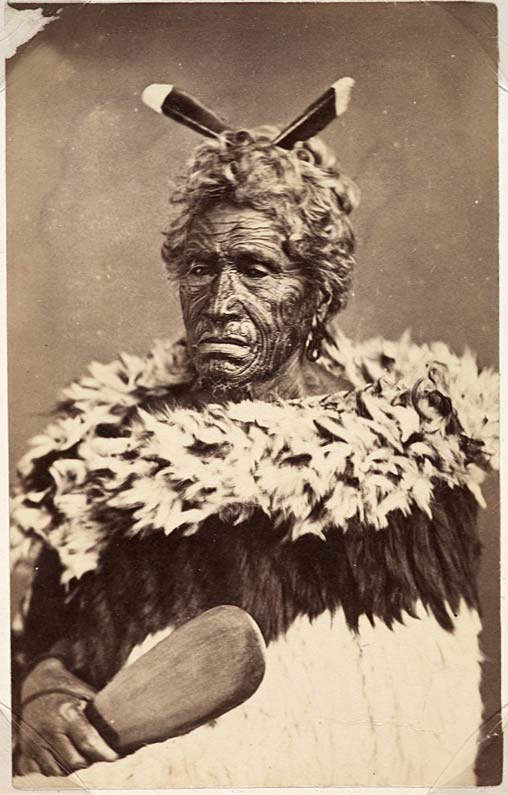 Elderly Mäori man, 1870s-80s
Elderly Mäori man, 1870s-80s
TLF ID R4717
This is black-and-white photograph of an unknown elderly Mäori man taken during the 1870s or 1880s. Shown from the waist up, he is wearing a feather cloak (kahu huruhuru) that has three distinct bands: the bottom layer is made up of white feathers, the middle band is of darker feathers and the band nearer the head consists of ruffled feathers. The man is holding a patu (club). His face is heavily tattooed, reflecting the art of tä moko and indicating that he is a man of mana (rank and status). He wears a pounamu (greenstone) ear pendant and has two feathers in his hair. The photo measures 9 cm x 6 cm.
